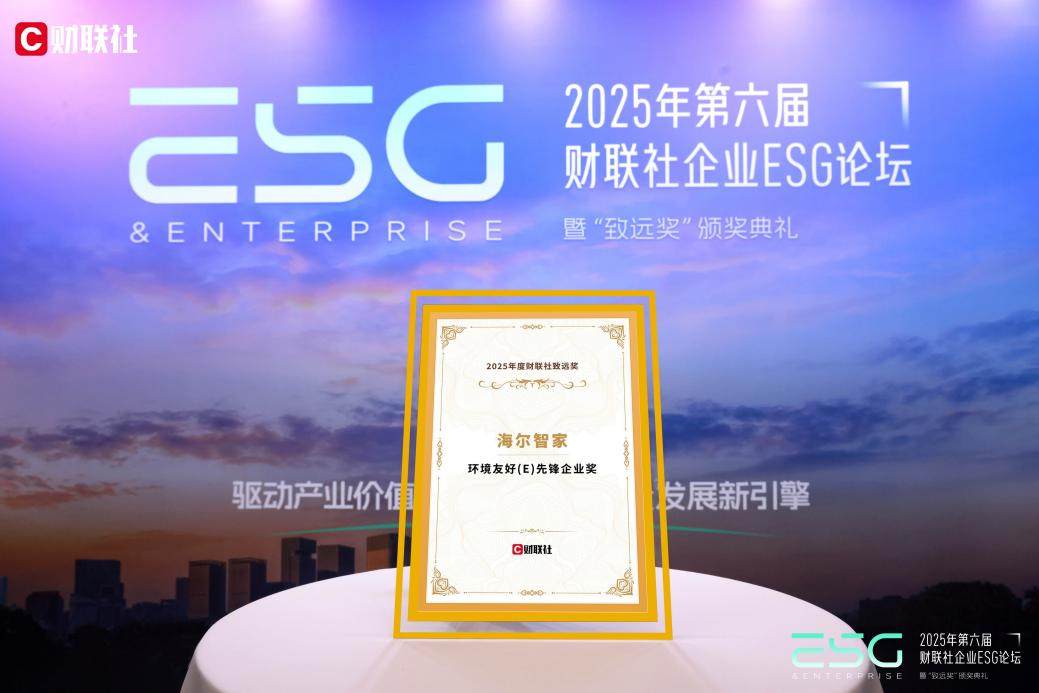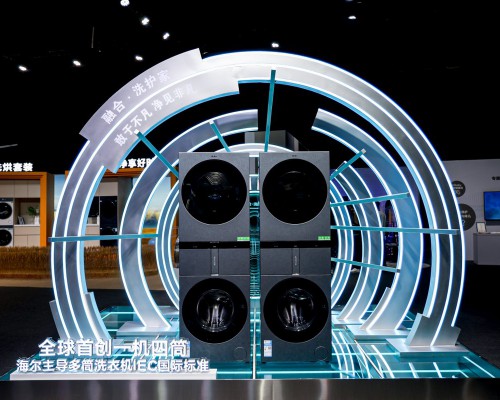刘强++卓艳男++黄强++张军海+孙伟民+
文章编号: 10055630(2014)02015204
收稿日期: 20131008
摘要: 全光铯(Cs)原子磁力仪是一种高灵敏度弱磁检测仪,核心器件Cs原子气室的工作温度直接决定了原子磁力仪的灵敏度。实验系统中采用频率锁定在Cs原子D1线F=3→F′=4共振线的圆偏振光极化Cs原子,检测光采用频率锁定在Cs原子D2线F=4→F′=5共振线的线偏振光,检测介质的圆二向色性。实验发现,随着Cs原子气室工作温度的升高,磁力仪输出信号幅度先增加然后逐渐衰减,而磁力仪的线宽近似线性增加。实验测试了温度由25 ℃升高至45 ℃时的磁力仪输出信号,结果表明:当温度为37.6 ℃时,原子磁力仪达到最佳灵敏度。
关键词: 原子磁力仪; 工作温度; 原子气室; 圆二向色性
中图分类号: O 433.5文献标志码: Adoi: 10.3969/j.issn.10055630.2014.02.013
Temperature dependence of all optical Cs atomic magnetometer
LIU Qiang1, ZHUO Yannan1, HUANG Qiang2, ZHANG Junhai2, SUN Weimin2
(1.College of Electronic Science, Northeast Petroleum University, Daqing 163318, China;
2.College of Science, Harbin Engineering University, Harbin 150001, China)
Abstract: All optical atomic magnetometer with high sensitivity is an important device to detect weak magnetic field. The sensitivity of the atomic magnetometer will be influenced by the operating temperature of Cs vapor cell. As the frequency of circularly polarized pump light and the linearly polarized probe light are locked to Cs D1 transition F=3→F′=4 and Cs D2 transition F=4→F′=5 respectively, linearly polarized probe light will rotate a small angle due to circular dichroic medium. With the increase of the operating temperature of Cs vapor cell, the output peak signal will increase first and then decrease, but the bandwidth has been increasing. The output signal of magnetometer was measured as the operating temperature varied from 25 ℃ to 45 ℃. The result shows that 37.6 ℃ is the optimal temperature to achieve the highest sensitivity.
Key words: atomic magnetometer; operating temperature; atomic vapor cell; circular dichroism
引言磁场测量方法种类繁多[1],而原子磁力仪是近年出现的一种高灵敏度弱磁场检测技术,磁测量灵敏度已经优于超导磁力仪达到0.16fT/Hz1/2 [2],并且这种磁力仪结构简单,更易于小型化使其成为近年研究的热点。目前,已经采用原子磁力仪在实验室条件下进行爆炸危险物品检测,医学领域的心磁、脑磁测量等相关领域的前期研究工作,同时还用于研究物理学中的基本对称性[35]。原子磁力仪的基本原理是利用线偏振光检测被极化的原子在磁场中的拉莫进动频率[6]。参与作用的原子数对原子磁力仪的灵敏度通常起着决定性作用,基于无自旋互换弛豫效应的原子磁力仪通常将原子气室加热至100 ℃以上来消除自旋互换碰撞弛豫[78];而利用非线性磁光旋转效应的原子磁力仪却通常将原子气室置于常温环境下[9];基于相干布居囚禁技术的87Rb原子磁力仪中原子气室的工作温度为70 ℃[10]。由此可见,为达到极限磁测量灵敏度,基于不同原理的原子磁力仪均存在最佳的工作温度值。本文研究了一种高灵敏度全光Cs原子磁力仪,在Cs原子气室内充入13 332.2 Pa的He缓冲气体。将泵浦光频率锁定在Cs原子D1线F=3→F′=4共振线,检测光频率锁定在Cs原子D2线F=4→F′=5共振线,测量了Cs原子气室工作温度由25 ℃升高至45 ℃时的磁力仪输出信号,通过对实验结果进行分析发现,当Cs原子气室工作温度为37.6 ℃时,原子磁力仪达到最佳灵敏度。图1原子磁力仪原理图
Fig.1Principle of atomic magnetometer1基本原理全光Cs原子磁力仪的工作过程可分成三部分[11],如图1所示:(1)圆偏振泵浦光极化Cs原子,极化方向沿泵浦光的传播方向;(2)被极化的原子绕着磁场的方向作拉莫进动;(3)线偏振光检测被极化的原子在检测光方向上的投影,偏振面产生旋转。检测光偏振面旋转角θ为[12]θ∝lcrenfDPxL(ν)(1)其中:l为泵浦光与检测光交叉区长度,c为光速,re为经典电子半径,n为粒子数密度,fD为振子强度,Px为原子极化在检测光方向的投影,L(ν)为洛伦兹线型。光学仪器第36卷
第2期刘强,等:全光Cs原子磁力仪的温度特性研究
原子磁力仪的灵敏度可表示为δB=ΔBS/N(2)其中:ΔB为原子磁力仪信号的线宽,S/N为偏振面旋转角检测的信号与噪声之比。提高原子磁力仪的灵敏度的直接方法是减小磁力仪线宽,同时增大系统信噪比。由式(1)可知,提高Cs原子气室工作温度可使粒子数密度n显著增加,输出信噪比增大。然而Cs原子粒子数增加会导致自旋破坏碰撞和自旋互换碰撞几率的增大,使原子磁力仪特性曲线的线宽增加。因此,由式(2)可知存在最佳的工作温度,使磁力仪灵敏度达到最优值。图2原子磁力仪实验原理图
Fig.2Experimental schematic diagram of atomic magnetometer2实验装置全光Cs原子磁力仪实验系统如图2所示。直径为30 mm的球型Cs原子气室置于三层磁屏蔽筒中,气室内充入13 332.2 Pa的He缓冲气体,亥姆霍兹线圈在y方向产生待测磁场。泵浦光选用输出波长为894.6 nm的外腔半导体激光器,采用饱和吸收谱技术可将频率锁定在Cs原子D1线的F=3→F′=4超精细共振线处,经准直扩束后采用电光幅度调制器(EOAM)对光强进行方波调制。被调制的泵浦光进入磁屏蔽筒后,经偏振片和λ/4波带片将其变成圆偏振光极化Cs原子。检测光选用波长为852.3 nm的外腔半导体激光器,利用饱和吸收谱将激光器频率锁定在Cs原子D2线F=4→F′=5共振线处,经偏振片后变成线偏振光通过Cs原子气室检测介质的圆二向色性,出射后由λ/4和PBS组成的光学系统进行检测,经光电转换、放大、做差、滤波后送入锁相放大器和示波器,实现磁场测量,同时估算原子磁力仪的灵敏度。3实验结果与分析将Cs原子气室置于亥姆霍兹线圈中心,产生100nT待测磁场,泵浦光强Ip=6 mW/cm2,频率锁定在Cs原子D1线F=3→F′=4共振线,检测光强Id=0.2 mW/cm2,频率锁定在Cs原子D2线F=4→F′=5共振线,Cs原子气室工作温度为37.6 ℃,测量到的原子磁力仪响应特性曲线如图3所示。横轴表示泵浦光强的调制频率,纵轴表示锁相放大器的同相输出信号,其幅值为线偏振检测光偏振面的旋转角度。当泵浦光的调制频率与被极化原子绕磁场的拉莫进动频率相等时,检测光偏振面旋转角出现极大值,即同相输出信号幅值达到峰值,此时峰值对应的横坐标频率为350 Hz。根据拉莫进动频率与磁场的关系 ω=γB(对于Cs原子γ=3.5 Hz/nT)可知,Cs原子气室所在位置的磁场值为100 nT,从而实现磁场测量。为分析温度对原子磁力仪灵敏度的影响,实验中首先固定泵浦光强和检测光强,测量了原子磁力仪响应特性曲线的峰值随温度的变化关系,如图4中离散点所示。随着温度的增加,Cs原子粒子数密度增加导致磁力仪输出信号的增大,在40 ℃左右达到极值,然后逐渐减小。产生这种现象的原因是:(1)随着温度的升高,Cs原子将由光学薄介质向光学厚介质转变,而泵浦光与检测光的交叉区域并未覆盖整个气室(如图2所示),导致泵浦光在与检测光交叉前会被Cs原子强烈吸收,有效泵浦光强减小。(2)与泵浦光类似,处于Cs原子共振线的检测光也会在与泵浦光交叉前后的区域中被Cs原子吸收,检测光强通常都比较小,如果这种吸收较强将直接影响输出信号的幅度,等价于在公式(1)的基础上乘吸收项exp(-nσl)。其中,n为粒子数密度,σ为吸收截面,l为泵浦光与检测光的非交叉区长度。理论计算结果如图4实线所示,与实验结果基本一致。
图3原子磁力仪响应特性曲线
Fig.3Output signal of atomic
magnetometer图4不同温度下的输出信号幅度
Fig.4Output amplitude of atomic
magnetometer at different temperature
为了估算磁力仪获得最佳灵敏度时的Cs原子气室工作温度,除了考虑磁力仪特性曲线的峰值幅度外,还需考虑曲线线宽。为此,在不同的温度下,测量得到的磁力仪特性曲线的峰值如图5所示,随着泵浦光强的增加输出信号峰值先迅速增加然后逐渐趋缓,说明泵浦光强逐渐达到原子极化所需的饱和光强。各温度下曲线峰值随泵浦光强的变化具有相同的变化趋势,说明非交叉区Cs原子对泵浦光的吸收可通过增加泵浦光强进行补偿。图6给出不同温度下,磁力仪特性曲线的线宽随泵浦光强的变化关系。在某一固定温度下,泵浦光强的增加将导致曲线线宽非线性增加。然而,当泵浦光强固定的条件下,随着温度的升高,线宽将近似线性增加,如图7所示,在此温度范围内,拟合函数为ΔB=0.6T+13.5。由此可见,温度的变化不仅影响曲线峰值,同时影响曲线线宽。忽略Cs原子气室工作温度的变化导致的磁力仪噪声,将此式与图4的仿真结果带入式(2),计算结果如图8所示,可知Cs原子气室的最佳工作温度为37.6 ℃。
图5不同温度下响应特性曲线峰值与泵浦光强的关系
Fig.5Dependence of amplitude on pumping
intensity at different temperature图6不同温度下泵浦光强与线宽的关系
Fig.6Dependence of bandwidth on pumping
intensity at different temperature
图7不同温度下的曲线线宽
Fig.7Bandwidth of inphase signal at
different temperature图8不同温度下原子磁力仪的相对灵敏度
Fig.8The relative sensitivity of atomic
magnetometer at different temperature
4结论本文介绍了一种高灵敏度全光Cs原子磁力仪,指出Cs原子气室的工作温度直接决定了原子磁力仪的灵敏度。当泵浦光频率锁定在Cs原子D1线F=3→F′=4共振线,检测光频率锁定在Cs原子D2线F=4→F′=5共振线时,分别测量了Cs原子气室工作温度对输出信号幅度和线宽的影响。发现随着Cs原子气室工作温度的升高,磁力仪输出信号幅度先增加然后逐渐衰减,而磁力仪的线宽近似线性增加。分析结果表明,当Cs原子气室的工作温度为37.6 ℃时,原子磁力仪可获得最佳灵敏度。这项工作对进一步优化磁力仪结构,提高测磁灵敏度具有重要意义。参考文献:
[1]王关德,李艳敏,李孟超,等.受控等效光速减缓及其在磁场强度测量中的应用[J].光学仪器,2008,30(2):48.
[2]DANG H B,MALOOF A C,ROMALIS M V.Ultrahigh sensitivity magnetic field and magnetization measurements with an atomic magnetometer[J].Applied Physics Letters,2010,97(15):15111011511103.
[3]XIA H,BENAMAR BARANGA A,HOFFMAN D,et al.Magnetoencephalography with an atomic magnetometer[J].Applied Physics Letters,2006,89(21):21110412111043.
[4]LEE S K,SAUER K L,SELTZER S J,et al.Subfemtotesla radiofrequency atomic magnetometer for detection of nuclear quadrupole resonance[J].Applied Physics Letters,2006,89(21):21410612141063.
[5]BROWN J M,SMULLIN S J,KORNACK T W,et al.New limit on Lorentz and CPTViolating neutron spin interactions[J].Physical Review Letters,2010,105(15):15160411516044.
[6]KOMINIS I K,KORNACK T W,ALLRED J C,et al.A subfemtotesla multichannel atomic magnetometer[J].Nature,2003,422(6932):596599.
[7]SHAH V,VASILAKIS G,ROMALIS M V.High bandwidth atomic magnetometery with continuous quantum nondemolition measurements[J].Physical Review Letters,2010,104(1):136011136014.
[8]SHAH V,ROMALIS M V.Spinexchange relaxationfree magnetometry using elliptically polarized light[J].Physical Review A,2009,80(1):134161134166.
[9]HOVDE C,PATTON B,CORSINI E,et al.Sensitive optical atomic magnetometer based on nonlinear magnetooptical rotation[C]∥Conference on Unattended Ground,Sea,and Air Sensor Technologies and Applications XII.Orlando:SPIE,2010,7693,769313176931310.
[10]LIU G B,GU S H.Experimental study of the CPT magnetometer worked on atomic energy level modulation[J].Journal of Physics B:Atomic,Molecular and Optical Physics,2010,43(3):350041350044.
[11]BUDKER D,ROMALIS M V.Optical magnetometry[J].Nature Physical,2007,3(4):227234.
[12]Seltzer S J.Developments in alkalimetal atomic magnetometry[D].Princeton:Princeton University,2008.第36卷第2期2014年4月光学仪器OPTICAL INSTRUMENTSVol.36, No.2April, 2014
[3]XIA H,BENAMAR BARANGA A,HOFFMAN D,et al.Magnetoencephalography with an atomic magnetometer[J].Applied Physics Letters,2006,89(21):21110412111043.
[4]LEE S K,SAUER K L,SELTZER S J,et al.Subfemtotesla radiofrequency atomic magnetometer for detection of nuclear quadrupole resonance[J].Applied Physics Letters,2006,89(21):21410612141063.
[5]BROWN J M,SMULLIN S J,KORNACK T W,et al.New limit on Lorentz and CPTViolating neutron spin interactions[J].Physical Review Letters,2010,105(15):15160411516044.
[6]KOMINIS I K,KORNACK T W,ALLRED J C,et al.A subfemtotesla multichannel atomic magnetometer[J].Nature,2003,422(6932):596599.
[7]SHAH V,VASILAKIS G,ROMALIS M V.High bandwidth atomic magnetometery with continuous quantum nondemolition measurements[J].Physical Review Letters,2010,104(1):136011136014.
[8]SHAH V,ROMALIS M V.Spinexchange relaxationfree magnetometry using elliptically polarized light[J].Physical Review A,2009,80(1):134161134166.
[9]HOVDE C,PATTON B,CORSINI E,et al.Sensitive optical atomic magnetometer based on nonlinear magnetooptical rotation[C]∥Conference on Unattended Ground,Sea,and Air Sensor Technologies and Applications XII.Orlando:SPIE,2010,7693,769313176931310.
[10]LIU G B,GU S H.Experimental study of the CPT magnetometer worked on atomic energy level modulation[J].Journal of Physics B:Atomic,Molecular and Optical Physics,2010,43(3):350041350044.
[11]BUDKER D,ROMALIS M V.Optical magnetometry[J].Nature Physical,2007,3(4):227234.
[12]Seltzer S J.Developments in alkalimetal atomic magnetometry[D].Princeton:Princeton University,2008.第36卷第2期2014年4月光学仪器OPTICAL INSTRUMENTSVol.36, No.2April, 2014
[3]XIA H,BENAMAR BARANGA A,HOFFMAN D,et al.Magnetoencephalography with an atomic magnetometer[J].Applied Physics Letters,2006,89(21):21110412111043.
[4]LEE S K,SAUER K L,SELTZER S J,et al.Subfemtotesla radiofrequency atomic magnetometer for detection of nuclear quadrupole resonance[J].Applied Physics Letters,2006,89(21):21410612141063.
[5]BROWN J M,SMULLIN S J,KORNACK T W,et al.New limit on Lorentz and CPTViolating neutron spin interactions[J].Physical Review Letters,2010,105(15):15160411516044.
[6]KOMINIS I K,KORNACK T W,ALLRED J C,et al.A subfemtotesla multichannel atomic magnetometer[J].Nature,2003,422(6932):596599.
[7]SHAH V,VASILAKIS G,ROMALIS M V.High bandwidth atomic magnetometery with continuous quantum nondemolition measurements[J].Physical Review Letters,2010,104(1):136011136014.
[8]SHAH V,ROMALIS M V.Spinexchange relaxationfree magnetometry using elliptically polarized light[J].Physical Review A,2009,80(1):134161134166.
[9]HOVDE C,PATTON B,CORSINI E,et al.Sensitive optical atomic magnetometer based on nonlinear magnetooptical rotation[C]∥Conference on Unattended Ground,Sea,and Air Sensor Technologies and Applications XII.Orlando:SPIE,2010,7693,769313176931310.
[10]LIU G B,GU S H.Experimental study of the CPT magnetometer worked on atomic energy level modulation[J].Journal of Physics B:Atomic,Molecular and Optical Physics,2010,43(3):350041350044.
[11]BUDKER D,ROMALIS M V.Optical magnetometry[J].Nature Physical,2007,3(4):227234.
[12]Seltzer S J.Developments in alkalimetal atomic magnetometry[D].Princeton:Princeton University,2008.
[3]XIA H,BENAMAR BARANGA A,HOFFMAN D,et al.Magnetoencephalography with an atomic magnetometer[J].Applied Physics Letters,2006,89(21):21110412111043.
[4]LEE S K,SAUER K L,SELTZER S J,et al.Subfemtotesla radiofrequency atomic magnetometer for detection of nuclear quadrupole resonance[J].Applied Physics Letters,2006,89(21):21410612141063.
[5]BROWN J M,SMULLIN S J,KORNACK T W,et al.New limit on Lorentz and CPTViolating neutron spin interactions[J].Physical Review Letters,2010,105(15):15160411516044.
[6]KOMINIS I K,KORNACK T W,ALLRED J C,et al.A subfemtotesla multichannel atomic magnetometer[J].Nature,2003,422(6932):596599.
[7]SHAH V,VASILAKIS G,ROMALIS M V.High bandwidth atomic magnetometery with continuous quantum nondemolition measurements[J].Physical Review Letters,2010,104(1):136011136014.
[8]SHAH V,ROMALIS M V.Spinexchange relaxationfree magnetometry using elliptically polarized light[J].Physical Review A,2009,80(1):134161134166.
[9]HOVDE C,PATTON B,CORSINI E,et al.Sensitive optical atomic magnetometer based on nonlinear magnetooptical rotation[C]∥Conference on Unattended Ground,Sea,and Air Sensor Technologies and Applications XII.Orlando:SPIE,2010,7693,769313176931310.
[10]LIU G B,GU S H.Experimental study of the CPT magnetometer worked on atomic energy level modulation[J].Journal of Physics B:Atomic,Molecular and Optical Physics,2010,43(3):350041350044.
[11]BUDKER D,ROMALIS M V.Optical magnetometry[J].Nature Physical,2007,3(4):227234.
[12]Seltzer S J.Developments in alkalimetal atomic magnetometry[D].Princeton:Princeton University,2008.第36卷第2期2014年4月光学仪器OPTICAL INSTRUMENTSVol.36, No.2April, 2014
[3]XIA H,BENAMAR BARANGA A,HOFFMAN D,et al.Magnetoencephalography with an atomic magnetometer[J].Applied Physics Letters,2006,89(21):21110412111043.
[4]LEE S K,SAUER K L,SELTZER S J,et al.Subfemtotesla radiofrequency atomic magnetometer for detection of nuclear quadrupole resonance[J].Applied Physics Letters,2006,89(21):21410612141063.
[5]BROWN J M,SMULLIN S J,KORNACK T W,et al.New limit on Lorentz and CPTViolating neutron spin interactions[J].Physical Review Letters,2010,105(15):15160411516044.
[6]KOMINIS I K,KORNACK T W,ALLRED J C,et al.A subfemtotesla multichannel atomic magnetometer[J].Nature,2003,422(6932):596599.
[7]SHAH V,VASILAKIS G,ROMALIS M V.High bandwidth atomic magnetometery with continuous quantum nondemolition measurements[J].Physical Review Letters,2010,104(1):136011136014.
[8]SHAH V,ROMALIS M V.Spinexchange relaxationfree magnetometry using elliptically polarized light[J].Physical Review A,2009,80(1):134161134166.
[9]HOVDE C,PATTON B,CORSINI E,et al.Sensitive optical atomic magnetometer based on nonlinear magnetooptical rotation[C]∥Conference on Unattended Ground,Sea,and Air Sensor Technologies and Applications XII.Orlando:SPIE,2010,7693,769313176931310.
[10]LIU G B,GU S H.Experimental study of the CPT magnetometer worked on atomic energy level modulation[J].Journal of Physics B:Atomic,Molecular and Optical Physics,2010,43(3):350041350044.
[11]BUDKER D,ROMALIS M V.Optical magnetometry[J].Nature Physical,2007,3(4):227234.
[12]Seltzer S J.Developments in alkalimetal atomic magnetometry[D].Princeton:Princeton University,2008.
[3]XIA H,BENAMAR BARANGA A,HOFFMAN D,et al.Magnetoencephalography with an atomic magnetometer[J].Applied Physics Letters,2006,89(21):21110412111043.
[4]LEE S K,SAUER K L,SELTZER S J,et al.Subfemtotesla radiofrequency atomic magnetometer for detection of nuclear quadrupole resonance[J].Applied Physics Letters,2006,89(21):21410612141063.
[5]BROWN J M,SMULLIN S J,KORNACK T W,et al.New limit on Lorentz and CPTViolating neutron spin interactions[J].Physical Review Letters,2010,105(15):15160411516044.
[6]KOMINIS I K,KORNACK T W,ALLRED J C,et al.A subfemtotesla multichannel atomic magnetometer[J].Nature,2003,422(6932):596599.
[7]SHAH V,VASILAKIS G,ROMALIS M V.High bandwidth atomic magnetometery with continuous quantum nondemolition measurements[J].Physical Review Letters,2010,104(1):136011136014.
[8]SHAH V,ROMALIS M V.Spinexchange relaxationfree magnetometry using elliptically polarized light[J].Physical Review A,2009,80(1):134161134166.
[9]HOVDE C,PATTON B,CORSINI E,et al.Sensitive optical atomic magnetometer based on nonlinear magnetooptical rotation[C]∥Conference on Unattended Ground,Sea,and Air Sensor Technologies and Applications XII.Orlando:SPIE,2010,7693,769313176931310.
[10]LIU G B,GU S H.Experimental study of the CPT magnetometer worked on atomic energy level modulation[J].Journal of Physics B:Atomic,Molecular and Optical Physics,2010,43(3):350041350044.
[11]BUDKER D,ROMALIS M V.Optical magnetometry[J].Nature Physical,2007,3(4):227234.
[12]Seltzer S J.Developments in alkalimetal atomic magnetometry[D].Princeton:Princeton University,2008.第36卷第2期2014年4月光学仪器OPTICAL INSTRUMENTSVol.36, No.2April, 2014
[3]XIA H,BENAMAR BARANGA A,HOFFMAN D,et al.Magnetoencephalography with an atomic magnetometer[J].Applied Physics Letters,2006,89(21):21110412111043.
[4]LEE S K,SAUER K L,SELTZER S J,et al.Subfemtotesla radiofrequency atomic magnetometer for detection of nuclear quadrupole resonance[J].Applied Physics Letters,2006,89(21):21410612141063.
[5]BROWN J M,SMULLIN S J,KORNACK T W,et al.New limit on Lorentz and CPTViolating neutron spin interactions[J].Physical Review Letters,2010,105(15):15160411516044.
[6]KOMINIS I K,KORNACK T W,ALLRED J C,et al.A subfemtotesla multichannel atomic magnetometer[J].Nature,2003,422(6932):596599.
[7]SHAH V,VASILAKIS G,ROMALIS M V.High bandwidth atomic magnetometery with continuous quantum nondemolition measurements[J].Physical Review Letters,2010,104(1):136011136014.
[8]SHAH V,ROMALIS M V.Spinexchange relaxationfree magnetometry using elliptically polarized light[J].Physical Review A,2009,80(1):134161134166.
[9]HOVDE C,PATTON B,CORSINI E,et al.Sensitive optical atomic magnetometer based on nonlinear magnetooptical rotation[C]∥Conference on Unattended Ground,Sea,and Air Sensor Technologies and Applications XII.Orlando:SPIE,2010,7693,769313176931310.
[10]LIU G B,GU S H.Experimental study of the CPT magnetometer worked on atomic energy level modulation[J].Journal of Physics B:Atomic,Molecular and Optical Physics,2010,43(3):350041350044.
[11]BUDKER D,ROMALIS M V.Optical magnetometry[J].Nature Physical,2007,3(4):227234.
[12]Seltzer S J.Developments in alkalimetal atomic magnetometry[D].Princeton:Princeton University,2008.
















